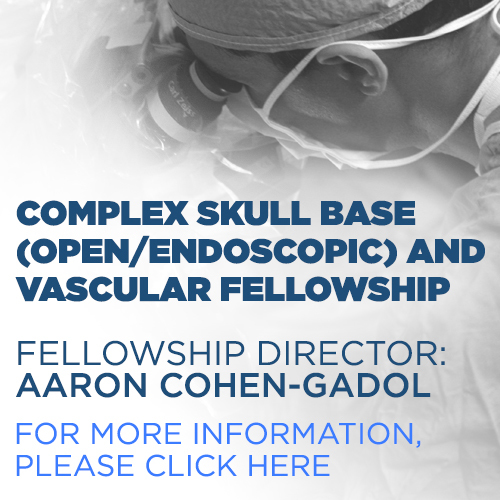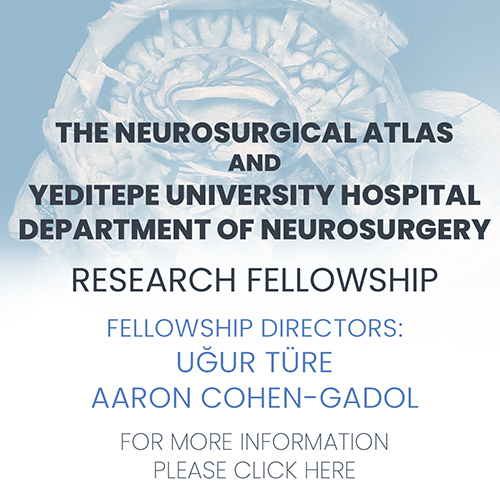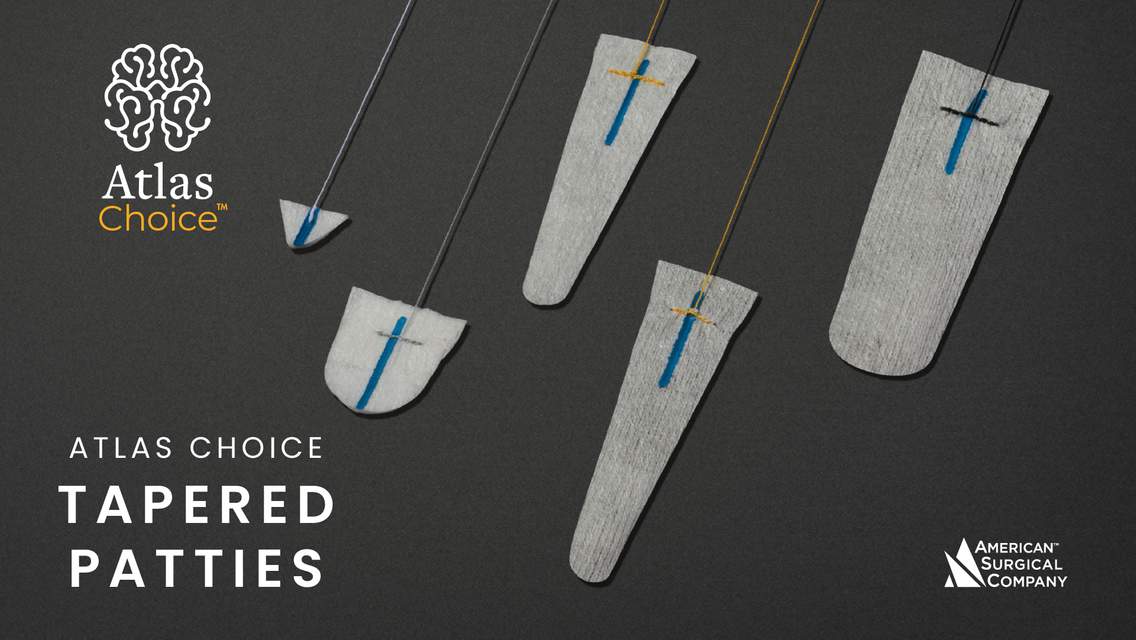Trending Articles: November 2020
What follows is a collaborative effort between The Neurosurgical Atlas and leading publishers of neurosurgical literature to provide you with a concise list of newly released articles that are most frequently accessed. Participating journals are listed in alphabetical order with a quick navigation link available in the table below.
 |
 |
 |
 |
WORLD NEUROSURGERY Editor's Choice
Partnership with the WORLD NEUROSURGERY journal took a different form such that the Editor's choice articles will instead be presented. A quick navigation link is available in the table below.
 |
JOURNAL OF NEUROSURGERY
- The Simpson grade: abandon the scale but preserve the message
- Surgical management of incidentally discovered low-grade gliomas
- Big data, machine learning, and artificial intelligence: a field guide for neurosurgeons
- Microneurosurgical removal of thalamic lesions: surgical results and considerations from a large, single-surgeon consecutive series
- Intraoperative MRI for newly diagnosed supratentorial glioblastoma: a multicenter-registry comparative study to conventional surgery
- Interhospital competition and hospital charges and costs for patients undergoing cranial neurosurgery
- Long-term clinical outcomes of bilateral GPi deep brain stimulation in advanced Parkinson’s disease: 5 years and beyond
- The value of intraoperative MRI in recurrent intracranial tumor surgery
- Continuous improvement in patient safety and quality in neurological surgery: the American Board of Neurological Surgery in the past, present, and future
- A tribute to the late Professor Donald Simpson, Australian neurosurgeon and namesake of the Simpson grading system for meningioma extent of resection
JOURNAL OF NEUROSURGERY: PEDIATRICS
- Magnetic resonance imaging–guided laser-induced thermal therapy for functional hemispherotomy in a child with refractory epilepsy and multiple medical comorbidities
- Fourth ventricle tumors in children: complications and influence of surgical approach
- Endoscope-assisted microsurgical resection of intrinsic brainstem epidermoid: technical note and review of the literature
- Endoscopic ultrasonic aspiration of an intraparenchymal hematoma in a newborn
- Effects of intraoperative liposomal bupivacaine on pain control and opioid use after pediatric Chiari I malformation surgery: an initial experience
- Soft tissue density within the foramen magnum, a predictor for surgical intervention in pediatric patients with Chiari malformation type I
- United States emergency department visits for children with cerebrospinal fluid shunts
- Pediatric neurosurgery in Asia and Australasia: training and clinical practice
- The feasibility and value of extraoperative and adjuvant intraoperative stereoelectroencephalography in rolandic and perirolandic epilepsies
- Interactions between programmable shunt valves and magnetically controlled growing rods for scoliosis
JOURNAL OF NEUROSURGERY: SPINE
- Consensus-based perioperative protocols during the COVID-19 pandemic
- Does the Global Alignment and Proportion score overestimate mechanical complications after adult spinal deformity correction?
- Bilateral paraspinal muscle flap closure technique for reduction of wound complications from posterior thoracolumbar spinal fusion: results of a series of 716 patients
- Air migration through neural foramina in pneumorrachis: case illustration
- A single-center retrospective analysis of 3- or 4-level anterior cervical discectomy and fusion: surgical outcomes in 66 patients
- Smart glasses display device for fluoroscopically guided minimally invasive spinal instrumentation surgery: a preliminary study
- Prognostic significance of C1–C2 facet malalignment after surgical decompression in adult Chiari malformation type I: a pilot study based on the Chicago Chiari Outcome Scale
- Practical answers to frequently asked questions for shared decision-making in adult spinal deformity surgery
- Obesity may be associated with adjacent-segment degeneration after single-level transforaminal lumbar interbody fusion in spinopelvic-mismatched patients with a minimum 2-year follow-up
- Stereotactic body radiation therapy for spinal metastases: a novel local control stratification by spinal region
NEUROSURGERY
- Guidelines for the Management of Severe Traumatic Brain Injury: 2020 Update of the Decompressive Craniectomy Recommendations
- Guidelines for the Management of Severe Traumatic Brain Injury, Fourth Edition
- Letter: Dismantling the Apocalypse Narrative: The Myth of the COVID-19 Stroke
- Guidelines for the Management of Pediatric Severe Traumatic Brain Injury, Third Edition: Update of the Brain Trauma Foundation Guidelines, Executive Summary
- Letter: The Coronavirus Disease 2019 Global Pandemic: A Neurosurgical Treatment Algorithm
- A Primer on Human Brain Organoids for the Neurosurgeon
- Amygdala and Hypothalamus: Historical Overview With Focus on Aggression
- An Update on Medications for Brain Arteriovenous Malformations
- Management of Odontoid Fractures in the Elderly: A Review of the Literature and an Evidence-Based Treatment Algorithm
- Overview of Mechanical Thrombectomy Techniques
OPERATIVE NEUROSURGERY
- Posterior Cervical Decompression and Instrumented Fusion for Cervical Spondylotic Myelopathy: 2-Dimensional Operative Video
- Essential Neurosurgery For Medical Students: Neurosurgical Physiology and Neurocritical Management of the Acute Neurosurgical Patient
- Essential Neurosurgery for Medical Students: Trauma
- Essential Neurosurgery for Medical Students: Spine
- Essential Neurosurgery for Medical Students: The Neurological Examination
- Access-Site Complications in Transfemoral Neuroendovascular Procedures: A Systematic Review of Incidence Rates and Management Strategies
- Essential Neurosurgery for Medical Students: Introduction: Tumor
- Essential Neurosurgery for Medical Students: Introduction: What is Neurosurgery?
- Game Theory and Neurosurgery
- Essential Neurosurgery for Medical Students: Epilepsy, Functional Neurosurgery, and Pain
WORLD NEUROSURGERY Editor's Choice
- A Surprise Sabbatical: How Mayo Clinic Neurosurgery Coped with Coronavirus Disease 2019
- What's in a Name? “Global Neurosurgery” in the 21st Century
- Academic Output of the Neurosurgery Profession During the COVID-19 Pandemic
- Increased Utilization of Social Media in Neurosurgery During the COVID-19 Pandemic
- “Staying Home”—Early Changes in Patterns of Neurotrauma in New York City During the COVID-19 Pandemic
- Use of C7 Slope as a Surrogate Marker for T1 Slope: A Radiographic Study in Patients with and without Cervical Deformity
Please login to post a comment.













